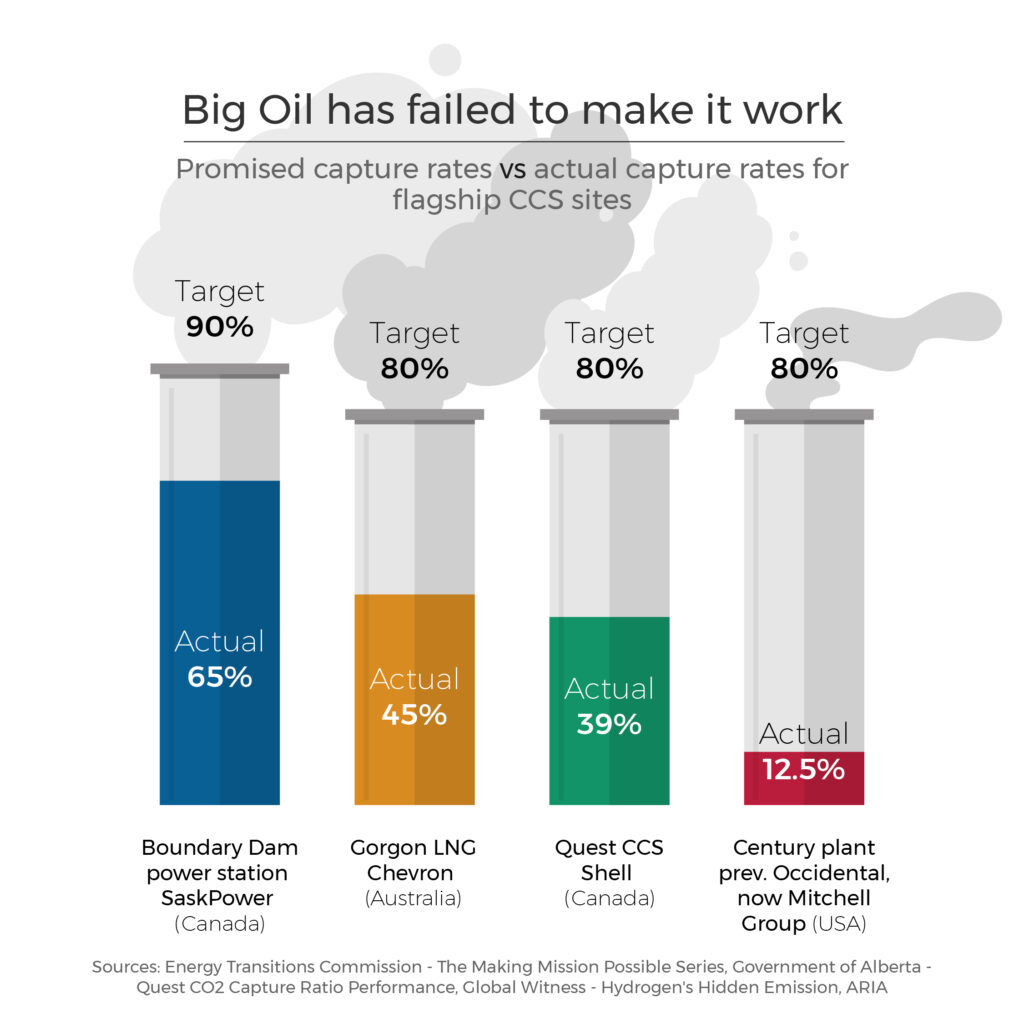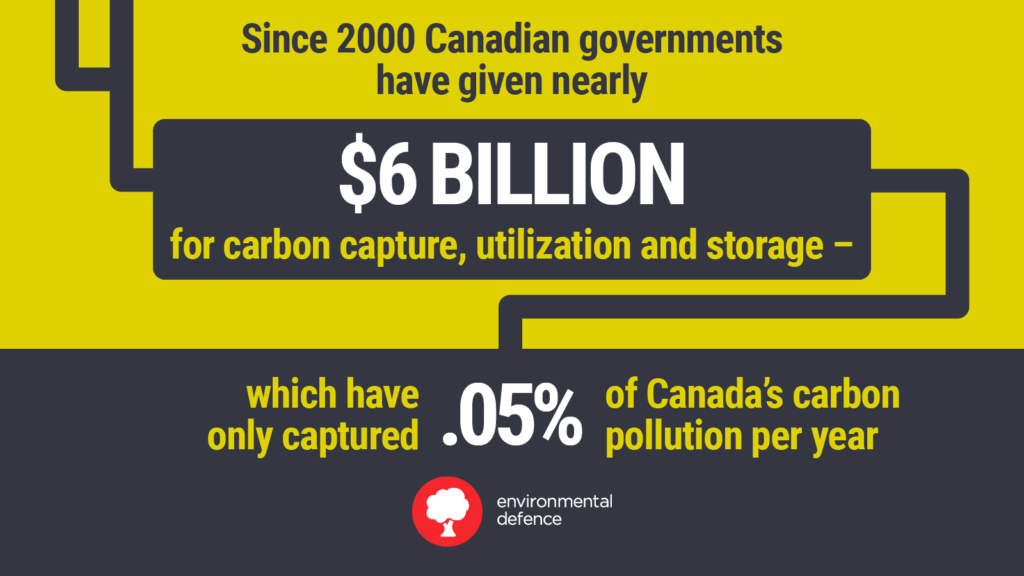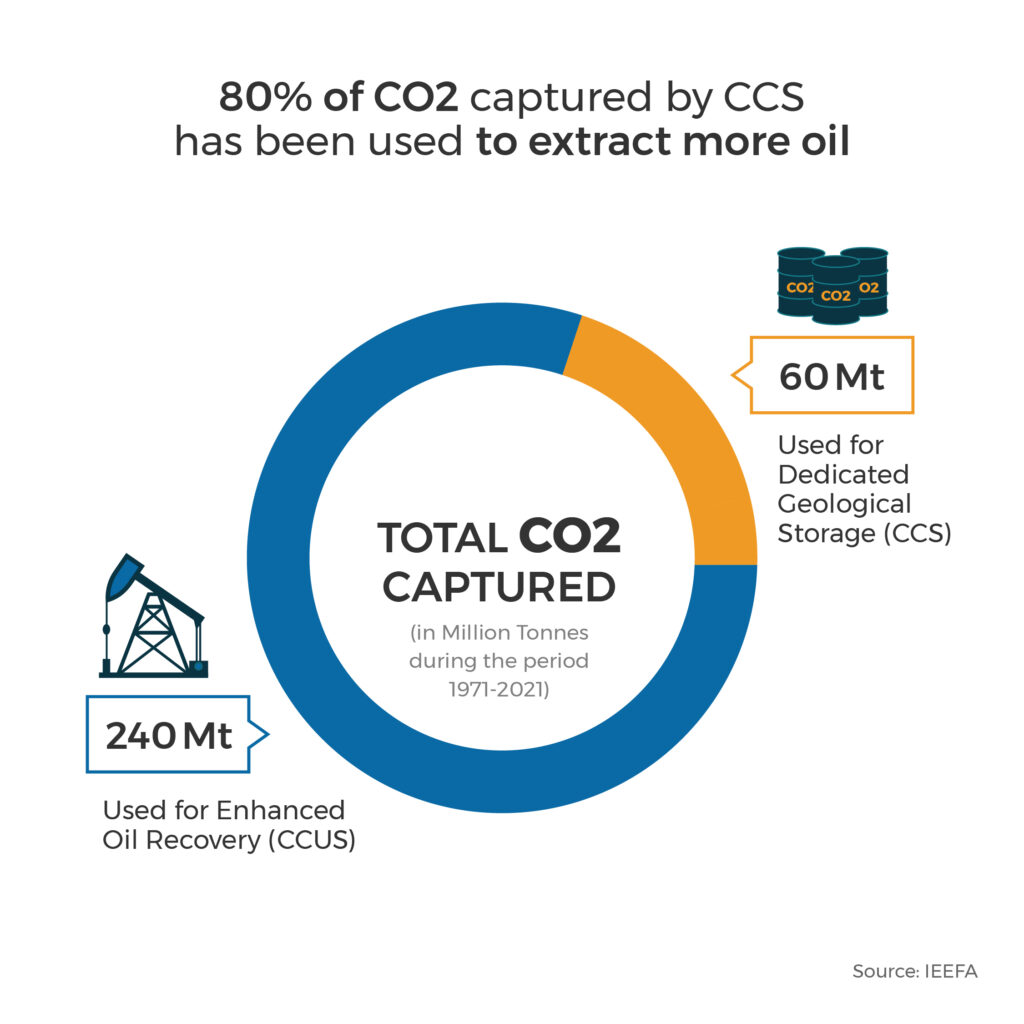Separating Solutions from Greenwashing
Addressing the climate crisis requires key measures such as transitioning from fossil fuels to renewable energy. However, the oil and gas industry obstructs this transition by promoting carbon capture and storage (CCS). Despite its exaggerated efficacy, CCS is problematic. Governments’ support for CCS raises concerns about environmental, health, and financial liabilities.
There is no silver bullet solution to the climate crisis, but we do know what the most critical measures are: replacing fossil fuels with renewable energy, building out storage and transmission, electrifying everything and finding energy savings wherever possible. This pathway will avert climate catastrophe and lead to more secure, reliable and affordable energy systems.
Despite the overwhelming benefits for basically everyone, there are enormous obstacles to a transition away from business as usual. The largest one is the oil and gas industry. The CEOs and shareholders of these companies stand to lose over US$1 trillion in future profits if their assets become stranded.
It’s no wonder these companies are doing everything in their power to delay the transition. We can’t forget that these are the same companies who for decades have been blocking climate action by sowing doubt about climate science and solutions.
Now that straight-up climate denial is no longer a defensible strategy for oil and gas companies, they are shifting to tactics of delay – and trying to position themselves as environmental leaders committed to reducing their greenhouse gas emissions. No where is this more obvious that with the massive advertising campaigns of the Pathways Alliance, a coalition of the six largest tar sands companies.

The industry’s favourite delay tactic is to promote their favourite dangerous distractions — especially carbon capture and storage (CCS) — as a climate solution. (Another one is to buy emissions reductions from somewhere else, in the form of offsets).
The role of CCS in reducing emissions is being vastly and dangerously exaggerated. And it’s not just environmentalists saying that, the head of the International Energy Agency called the oil and gas industry’s CCS plans a fantasy and said they cannot be used to justify the status quo.
Despite decades of research and development, carbon capture is neither economically sound nor proven at scale. Most projects fail, and the few that are able to get off the ground underperform. A 2021 study found that more than 80 per cent of the CCS projects attempted in the U.S. have ended in failure. A 2022 report analyzed 13 flagship CCS projects – comprising over half of the total nominal capture capacity operating worldwide – and found that 10 of these projects are either underperforming or have failed completely.
In Canada, there are seven commercial CCS projects currently operating—five in the oil and gas sector, one in coal-fired electricity generation, and one in the agricultural sector—capturing only 0.05 per cent of national emissions. Globally, current capacity is under 40 MT – less than 0.1 per cent of annual carbon emissions (this assumes that CCS projects are all operating at their technical capacity, which isn’t the case). Yet the IEA had predicted in 2009 that there would be over 300 MT of carbon capture globally by 2020.

According to the Intergovernmental Panel on Climate Change (IPCC), CCS is the least effective and most expensive and of the mitigation options. CCS equipment is complex, very energy intensive and needs to be adapted for specific applications. That makes it challenging to achieve large-scale deployment. CCS costs are likely to go up in the next phase of projects. Addressing emissions in the fossil-power sector and other post-combustion industries is more complex and will be more expensive than current CCS projects (which are mostly used for gas processing, to strip carbon dioxide from methane). On the other hand, the costs of renewables have plummeted to the point that they are cheaper than fossil fuels.
“According to the Intergovernmental Panel on Climate Change (IPCC), CCS is the least effective and most expensive and of the mitigation options”
Julia Levin
When applied to the production of oil and gas, CCS does nothing about downstream emissions (emissions from burning fossil fuels) – which is where 80 per cent of the emissions from oil and gas are generated. Similarly, carbon capture does not address the significant methane leakage from the production and distribution of oil and gas.
Not only does CCS therefore ignore most of the problem, most projects have actually put more carbon into the atmosphere than what they’ve captured from polluting facilities. This is because around 80 per cent of captured carbon globally is being used for enhanced oil recovery, i.e. oil production that otherwise wouldn’t have happened.

To date, the heavy environmental footprint and safety and health hazards associated with CCS infrastructure have been largely overlooked – and regulatory frameworks that ensure adequate public safety measures are largely lacking. Scaling up CCS would require a huge build up of carbon transportation and storage infrastructure. That’s not only logistically complex and expensive; it is dangerous for the many communities through which carbon dioxide pipelines would run and where capture and storage facilities would be built. For example, when heavy rains caused a carbon pipeline to rupture in Mississippi in 2020, 300 people were evacuated and 45 people had to be hospitalized because of exposure to the carbon dioxide which causes asphyxiation. Carbon leakage also has the potential to contaminate ground and surface waters, impact soil ecology and the marine environment, impact agriculture and harm human health. When a power plant or oil refinery is equipped with CCS, the additional energy required to run the equipment can be as high as 50 per cent. That extra fuel means that frontline communities are being exposed to significantly more pollutants and contaminants.
“The heavy environmental footprint and safety and health hazards associated with CCS infrastructure have been largely overlooked
Julia Levin
Finally, a buildout of CCS infrastructure comes with massive concerns about future liability, especially with regards to storage projects. Who will be responsible for the carbon once it is stored underground, including monitoring storage sites, remediating carbon leaks to the extent possible and and paying for any harm to the climate, environment, human health in the event something goes wrong? Governments in Canada, and especially Alberta, are already struggling to deal with enormous unfunded financial liabilities of the oil and gas sector.
Unfortunately, governments in Canada and around the world are falling for the industry’s lies. They are recklessly supporting the deployment of CCS, both through building massive loopholes into regulatory frameworks as well as handing over massive taxpayer subsidies to the wealthiest companies on the planet.
The transition to a fully renewable, electrified and efficient energy system won’t be easy. We shouldn’t make it any harder than it needs to be by mixing up actual solutions with Big Oil’s greenwashing.














